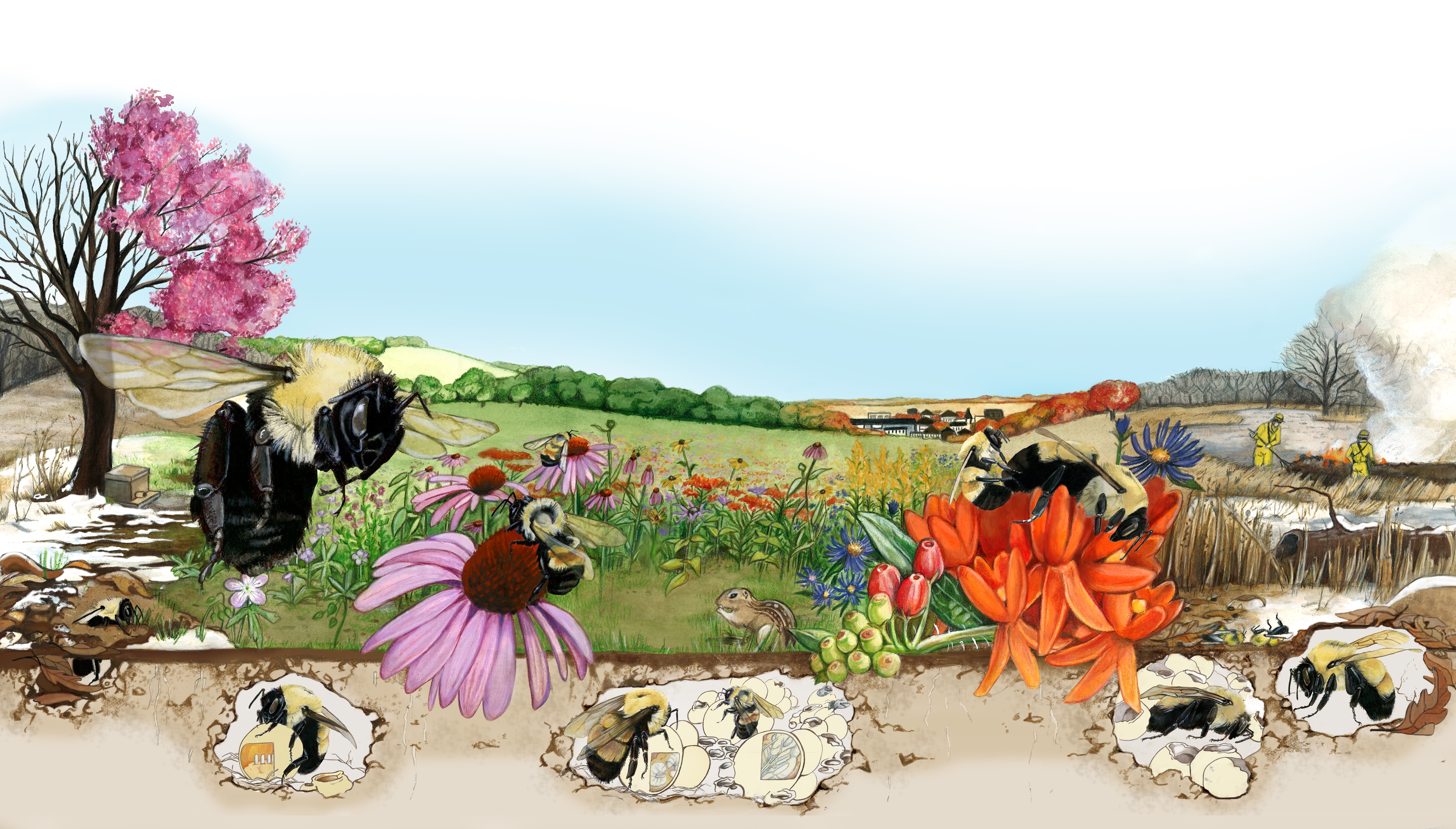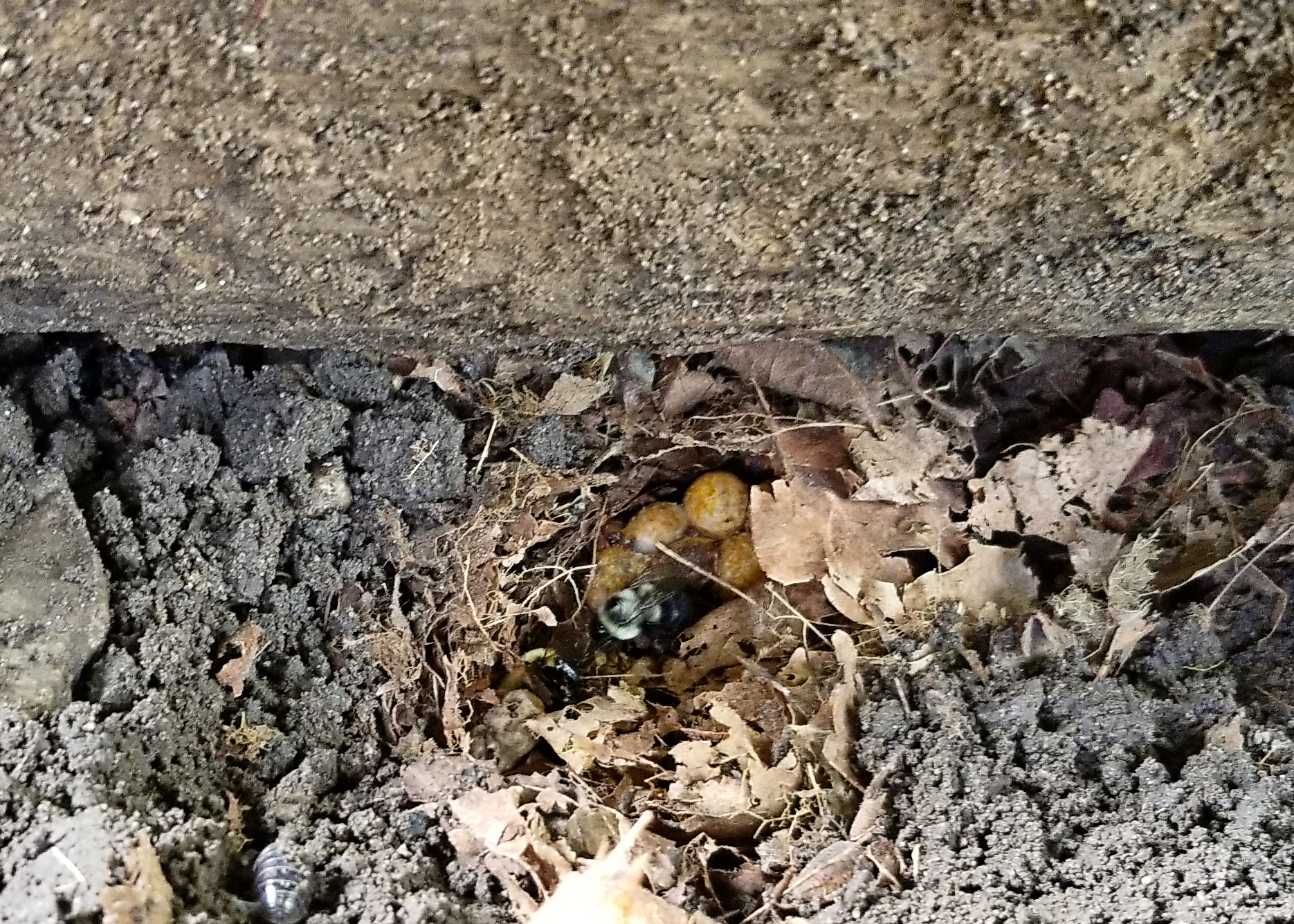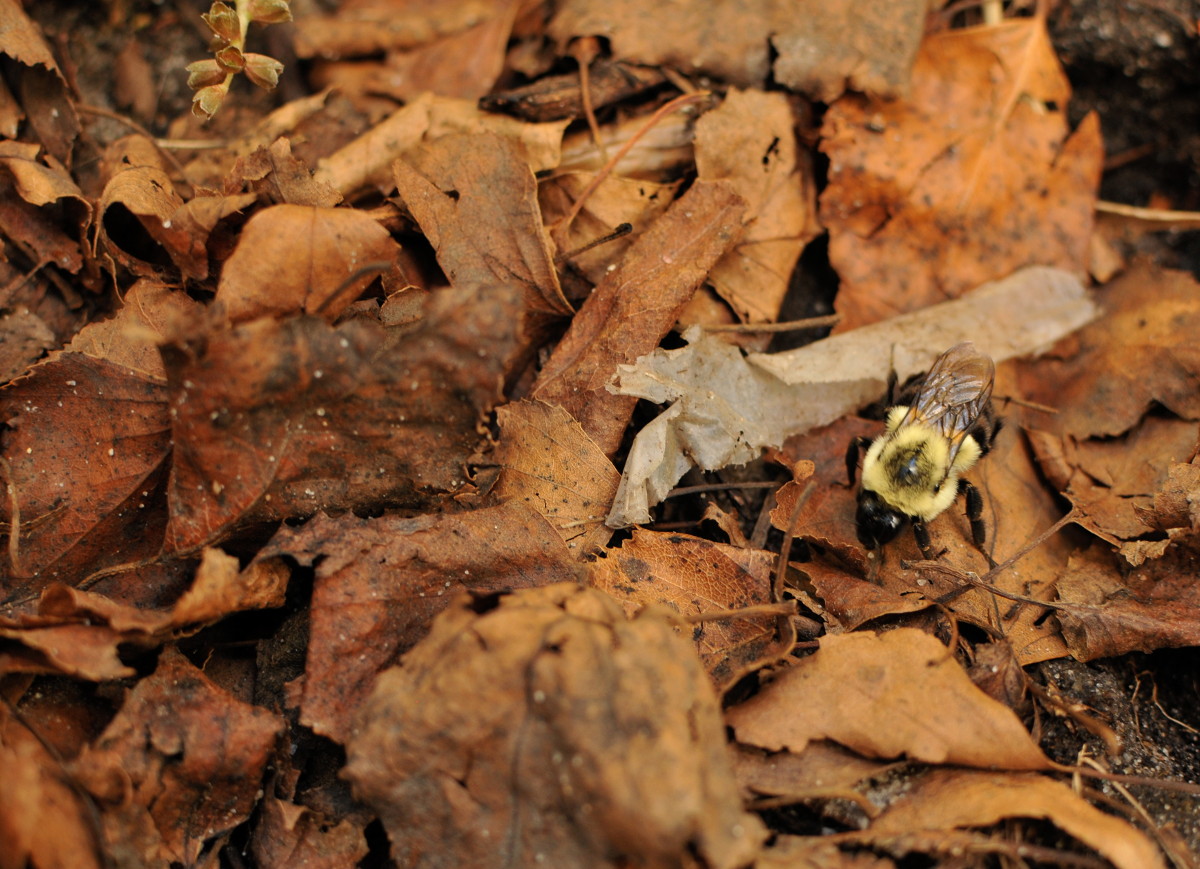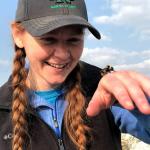This is a critical time of year: Emerging from hibernation, the queen needs sufficient food for herself and her first batch of developing offspring.
Spring is upon us, which means the buzz of bumble bees will soon fill the air—if it hasn’t already! This is a great time to ensure that your green space is ready as bees begin waking up and looking for food. When preparing habitat for bumble bees, it is critical to understand how their needs change throughout the year. Here we’ll explain the bumble bee’s life cycle so you can make the most of your pollinator conservation efforts this spring.

Most species of bumble bees live in social colonies made up of a queen bee, female ‘worker’ bees, and male bees. These colonies are annual—meaning they only live for one year—and as the seasons shift, so do the needs of the colony. In spring, the queen bee emerges from the hole in the ground in which she has been hibernating all winter. Right away, she needs to find nectar and pollen to replenish her energy level and fat reserves.
Then the queen will spend the next several days searching for a nest location. Bumble bees typically nest in pre-existing cavities on the landscape like rock piles, empty mouse burrows, and under layers of dense vegetation. Once she finds a place, the queen will construct a few waxen pots, fill them with nectar and pollen, and proceed to lay her eggs on top.

This is a critical time of year because the queen needs sufficient food herself, as well as enough to nourish her first batch of developing offspring. Often, the amount of floral resources in bloom during early spring are limited. Adding early blooming shrubs and trees to your yard or garden can provide essential resources that will help springboard the colony to health.
Within six weeks, if everything goes according to plan, the queen will have produced multiple worker bees who will be bustling about the colony. At this point the queen no longer leaves the nest to forage and instead focuses on laying eggs. The worker bees take on the foraging role, bringing resources back to the nest to support the development of more workers. Worker bees are also responsible for tending to the developing young, regulating nest temperature, and defending the nest. The peak number of individuals in a colony is reached in mid to late summer, and although it varies by species and availability of resources, colonies may have anywhere from tens to hundreds of individuals.
Progressing into late summer, the colony will switch from producing workers to producing reproductive members of the colony: Male bees and new queens. Male bees are short-lived; their only task is to mate with new queens as they emerge. Once males leave the nest, they rarely return, and can often be found sleeping on vegetation at dusk and dawn (or in the middle of the night if you go looking with a flashlight!).
Meanwhile, new queens will remain in the nest and build up fat reserves as the female worker bees tend to her needs. New queens will also leave the nest to forage, and by doing so she may encounter a potential mate. Mating occurs outside of the nest, and new queens will typically only mate with a single male. To increase their chances of mating, males will search for nest entrances and then actively patrol them. When faced with another male, the two bees may display territorial behavior and compete for the better position.
As summer wanes and mating is complete, males die off. The new queen returns to the colony, where she will be protected and continue feeding. Late fall is another critical time of year for queen bumble bees; they need enough flowering resources near their natal nest to build up fat reserves before heading into winter. Ensuring that your garden beds or potted patio plants provide these resources is another great opportunity for you to help.
Eventually the worker bumble bees will die off, as will the foundress queen, leaving the new queen to fend for herself. The new queen leaves the nest and tries to find a safe place to hibernate. This is an aspect of the life cycle that scientists don’t know that much about, but we do know that loose soil, pine needle duff, and leaf litter seem to be key landscape features they seek out.

Once she finds a good location underground, the queen will drop her metabolic rate to conserve energy and produce an antifreeze-like chemical to withstand cold temperatures. Upon receiving cues from the environment that spring has arrived, the queen will emerge, begin anew, and the cycle repeats itself.
Queen bumble bees are the key to the success of bumble bee colonies. Living an entire year, they are the only colony member to persist through winter and begin the next generation. So, when queen bumble bees start emerging this spring, here are some actions to help them get up and running—or, rather, flying:
1. Plant Early Blooming Flowers
Whether you’re planting in a backyard or placing potted flowers on an apartment deck or outside your workplace, you are providing valuable food resources for queens. Consult our region-specific Pollinator Plant Lists, and then visit your local nursery. Please talk to your nursery and make sure your new plants are not pre-treated with systemic insecticides. Pre-treated plants may harm the very animals that you’re trying to support.
2. Allow Dandelions to Live Long and Prosper
While your neighbors might heckle you, the bees will certainly thank you. Flowers like dandelions and clover that have been deemed “weeds” are important early-blooming resources. Learn how to Bee Friendlier with your Lawncare, and if you absolutely have to remove these plants from your landscape, please be sure to replace them with another floral resource.
3. Help Your Yard Be Wild
You now know that bumble bees need more than flowers to persist; they also need a safe place to nest and overwinter—and your yard can be that space. Try incorporating pollinator-friendly habitat by adding rock piles or a section of dense vegetation or small brush piles to your landscape’s aesthetic. Providing nesting habitat is just as valuable as providing food resources for our bees.
4. Help Us Track and Conserve Bumble Bees
When you see a bumble bee, why not stop to photograph it? Submitting photographs right from your phone is an easy way to help further our understanding of early-spring queen activity. To do so, download the Bumble Bee Watch app for Apple or Android!
If you live in Idaho, Oregon, Washington, or Nebraska, consider joining the Pacific Northwest Bumble Bee Atlas or the Nebraska Bumble Bee Atlas! These community science projects are aimed at tracking and conserving the native bumble bees found in each region. Participation is open to anyone. Not located in the above states? You can still submit bumble bee observations through Bumble Bee Watch on your own! People located throughout North America can also contribute queen and nest sightings to York University’s #Quest4BeeNests research project.
5. Plan for Fall with Food and Habitat Resources
Preparing your space to support queens in late fall is just as important as providing early spring resources. Plant late blooming flowers that are insecticide-free from your local nursery (see #1). Additionally, you can participate in Leave the Leaves. By incorporating fallen leaves into your landscape you are providing vital space and insulation for insects to rest during the winter.
We gratefully acknowledge that our bumble bee conservation work is supported by our partner, Beesponsible.
Further Reading
Ready to create habitat for bumble bees and other pollinators? For additional resources specific to your region, please visit our Pollinator Conservation Resource Center.
Learn more about bumble bees and our work to conserve them.





